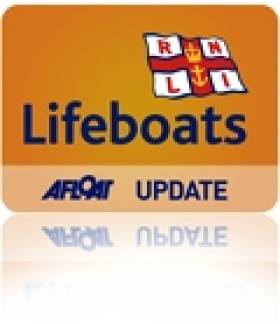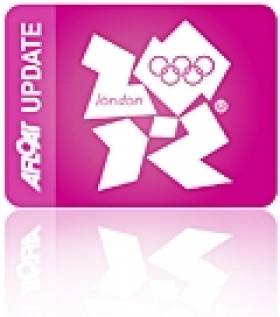Displaying items by tag: North Wales
Marine Industry News reports that a company providing berthing and marine services at a storied North Wales marina has been sold after going into administration last year.
Port Dinorwic Marina, on the Menai Strait south-west of Bangor, is now in the hands of a consortium of local investors after its previous owner’s cashflow issues led to disputes with staff over unpaid wages and with contractors.
The marina dates back to 1763 and is a hub for cruising in the region — a popular haunt for Irish boaters both for leisure and for racing.
Simon Monks, joint administrator said of the sale: “Whilst Port Dinorwic Marina has had its challenges in recent years, its sale out of administration to a new owner/operator will enable the necessary investment to create a thriving marina that staff, berth holders and local community can be proud of.”
Marine Industry News has more on the story HERE.
Searches Resume For Light Aircraft Missing Over Irish Sea Off North Wales
Searches for a light aircraft that went missing between the Irish Sea and the Menai Strait off North Wales yesterday afternoon (Monday 25 November) were suspended overnight.
The aircraft, with one person on board, reportedly disappeared from radar near Puffin Island off Anglesey at lunchtime yesterday.
This prompted a major search operation that involved HM Coastguard teams from Penmon and Bangor, the coastguard helicopter from Caernarfon and RNLI lifeboats from Beaumaris, Moelfre and Llandudno.
Searches were set to resume this morning in an area around Penmon, on the opposite side of Anglesey from Holyhead.
Late Night Mayday Response for Holyhead RNLI
#LIFEBOATS - Holyhead RNLI's all-weather lifeboat was dispatched late on Wednesday night (24 October) in response to a distress call from a yacht in the Irish Sea.
The volunteer crew received the request from Holyhead Coastguard after a mayday call from the skipper of a 24-yacht off the northwest coast of Anglesey in North Wales.
The man, who was the only person aboard the vessel, was on his way to the Canary Islands when he made the call for assistance.
A helicopter from RAF Valley stood by the casualty until the lifeboat crew arrived to rescue him and tow his vessel back to Holyhead.
The yacht reportedly started to sink as it was towed into Holyhead harbour, but the lifeboat crew managed to secure the vessel alongside the boatyard slip.
RNLI To Play Big Part in Olympic Torch Relay
#OLYMPICS 2012 - The RNLI will play a "key role" during the Olympic torch relay ahead of the London games this summer, as Yachting and Boating World reports.
On 28 May the Olympic torch is set to visit Anglesey in north Wales, when it is taken along the Menai Strait on board the RNLI's Annette Mary Liddington.
The torch will again be carried by RNLI volunteers on 18 July when it is ferried to shore from a tall ship in Dover harbour aboard the all-weather lifeboat City of London II.
Dover RNLI's operations manager Roy Couzens said: “We are very much looking forward to being involved on the day – and believe me, when that torch is at sea in our lifeboat, it couldn’t be in safer hands!”
The Olympic torch relay begins in Plymouth on 19 May and finishes at the Olympic Stadium on 27 July. Its two-month-long journey will take it throughout Britain and Northern Ireland, and includes a visit to Dublin on Wednesday 6 June.
An interactive map of the complete torch relay route is available on the official London 2012 website HERE.
Work Begins to Eliminate Sea Squirts in North Wales
#MARINE WILDLIFE - Work on exterminating sea squirts at a marina in north Wales has begun.
The £250,000 (€301,000) project by the Countryside Council for Wales involves attaching giant bags to the subsurface structures around the marina in Holyhead, which is hoped will stop the clean flow of water to the sea squirts, causing them to suffocate and die.
Marine biologist Rohan Holt, who is managing the project, said: “If we successfully eradicate the sea squirt, we will work hard to make sure that it does not recolonise.
"This will mean careful monitoring in Holyhead marina and other marinas and popular mooring areas throughout Wales to check that it hasn’t reappeared."
The sea creature threatens shellfish by spreading like a blanket across the seabed and other surfaces.
As previously reported on Afloat.ie, colonies of the invasive Japanese sea squirt are posing a throat to mussel and scallop bed in the Menai Strait between Anglesey and the mainland.
Boats from Ireland have been blamed for carrying the invasive pest into Holyhead.
The Daily Post has more on the story HERE.
Murphy Wins UK Laser Qualifier
National Yacht Club Olympic campaigner Annalise Murphy won the UK Laser Radial Qualifiers in North Wales at the weekend. It was a short, sharp affair with no wind in Pwhelli on Saturday. She scored a 1,1,6 in the three races on Sunday sailing in a southerly 15-knot breeze and in a mixed fleet of 79 entrants.
There was no doubt that race two of the series was owned by Murphy who had finished 55th in the first race according to a UK Laser report. Murphy's upwind speed put the rest of the fleet to shame and she pulled well clear leaving the rest of the fleet to scrap over the minor places. Brewster who has been training with Murphy in Ireland obviously had some of the strong wind technique rubbed off on her to take second with Phil McCoy coming in third.Race three and Hannah Snellgrove had the best start but Murphy footed off underneath and with the first shift tacked and was never seen again. Harvey showed that he can not only perform in the light but also the wind, putting in a convincing second, with Olly Porter taking third.
Race four and Murphy was unable to clear the pin at start time and had to tack duck the whole fleet, leaving her to claw her way back through the fleet which was being initially led by Harvey. The battle at the final windward mark was between Porter and Harvey who were well clear of the chasing pack, with Emmett holding off Murphy for third. This time downwind Porter got the better of Harvey, securing the bullet with Harvey second. This was more than enough for Harvey to take the event with Porter's bullet putting him into second. Murphy had a disappointing downwind to finish seventh and a drop to third overall.
However upon returning ashore it transpired that Harvey had been black flagged, promoting Emmett to second in the race. This dropped Harvey to fifth overall and promoted Murphy to take the event on tie breaker!
Overall results:
1st Annalise Murphy 8pts
2nd Olly Porter 8pts
3rd Andrea Brewster 11pts
4th Cameron Douglas 12pts
5th Ross Harvey 13pts
6th Hannah Snellgrove 17pts
Murphy (21) is in Weymouth today at a two week training camp before Ireland's first Olympic qualification event at the Delta Lloyd regatta in Holland. It's a process however that has got easier for the Dun Laoghaire sailor following the withdrawal of the Belfast lough campaigner Tiffany Brien.
Far from hanging up her boots though Brien was back on home waters winning the Laser Radial Ulster Championships at Royal North Ireland YC, Cultra last weekend.
Ulysses Celebrates 10 Years of Irish Sea Service
In January 2000 the keel of the worlds largest car ferry was laid at the Aker Finnyards in Rauma, Finland. The following year the €100m cruiseferry giant departed the shipyard on a four-day delivery voyage to Dublin Port. Upon Ulysses's arrival on 4th March she was presented with a traditional welcoming escort of saluting water-firing tugs.
The Ulysses was named at a ceremony in the port on 21st March by the 'golden godmother' Mairead Berry, Ireland's 25-year old Paralympic Games gold medallist. Four days later Ulysses made her commercial maiden voyage to Holyhead on 25th March.
Wih 12 decks the vessel has an extensive range of facilities and they are named with themes derived from James Joyce's famous novel 'Ulysses'. There is seating available for up to 1,938 passengers and there are 117 twin or single-cabins, accommodating up to 228 passengers.
Only two months into service the Ulysses won the prestigious 'Most Significant New Build - Ferry' category award in the Cruise & Ferry magazine 2001 Awards competition. Her Finnish builders are not only builders of large cruise-ferries for Baltic Sea operators and beyond but also are also renowned for the construction of very large cruiseships for international clients.
Ulysses was designed specifically to serve the central corridor route with a schedule of two round trips daily. She directly replaced the 1997 Dutch built 34,031 grt ro-pax Isle of Inishmore, which transferred to Rosslare-Pembroke Dock service.
In 2006 the Ulysses alongside her fleetmates were transferred from the Irish flag to the Cypriot flag in addition to a change of Irish crew with those outsourced from citizens mostly from the Baltic and Eastern European countries.
Due to the sheer size of the Ulysses, which has a length of 209m, a beam of nearly 32m and a 6.4m draught, she has not missed a single crossing due to bad weather conditions. The vessel has a 22 knot / 41kph service -speed on the 60-mile route which translates to a distance of over 182,000 kms a year.
To celebrate Ulysses 10th year in service, Irish Ferries has enhanced the Club Class option to passengers which includes free-Wifi, which enables a constant connection and an array of other benefits during the 3-hour 15 minute crossing.
For a virtual tour of the Ulysses with views taken from the top deck as the cruiseferry departs Holyhead and the mountains of Snowdonia setting as a backdrop plus interior tours of the vessel click here.



































































